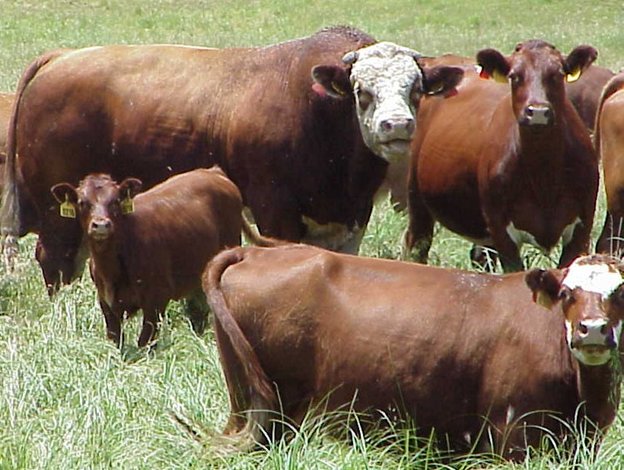
By David Hardin, DVM, UNL School of Veterinary Medicine and Biomedical Sciences
Profitability for the cow calf producers starts with high pregnancy rates and a high percentage of the calves being conceived early in the breeding season. A critical component of reproductive success is having sound, highly fertile bulls. This requires bull(s) that can detect cows in estrus, successfully mount and deliver viable, normal sperm into the reproductive tract of the cow. A proven method to determine the breeding potential of bulls is the Breeding Soundness Evaluation (BSE) system developed by the Society for Theriogenology. The Breeding Soundness Evaluation (BSE) is a relatively quick and economic procedure that can be performed by your veterinarian. It is recommended that all bulls be checked annually, within 60 days of the start of the breeding season. The BSE system is a screening procedure that places bulls into categories of satisfactory, unsatisfactory or deferred. The BSE system is most effective in identifying bulls at the lower end of the fertility spectrum. Eliminating bulls from the breeding herd that the BSE system has determined to be less fertile (classified as unsatisfactory potential breeders) and replacing them with bulls that are classified as satisfactory potential breeders increases the likelihood of high pregnancy rates and high percentage of calves being conceived early in the breeding season.
The BSE procedure includes: General physical exam that evaluates the bull’s nutritional status (body condition), looks for structural defects and disease conditions that affect the feet and legs and would hinder the bull’s breeding performance. The bull is evaluated to determine the adequacy of their eyesight and teeth. The internal structures of the reproductive system are examined, such as the prostate, seminal vesicles, ampulla and inguinal rings to ensure normalcy. The external structures of the reproductive system such as the penis, prepuce, sheath, testicles, scrotum and epididymis are also examined for normalcy. Scrotal circumstance is measured and adequacy is determined based on established standards by age. Semen evaluation is a critical component of the BSE and includes a microscopic evaluation of the semen to determine sperm motility and the percent of morphologically normal sperm.
On a herd basis it is generally found that more than 75% of the bulls tested meet the requirements to be classified as satisfactory. The objective of the BSE is to identity those bulls that fail to meet the minimum standards. Having bulls that are unsatisfactory potential breeders in the breeding herd places the herd at risk for lower and/or delayed pregnancies. Remember that the higher percentage of calves that are conceived early in the breeding season means more profit. In multi-sire breeding pastures, generally one or two bulls will be dominate and breed more cows compared to bulls that are subordinate. If by chance the dominate bull(s) are unsatisfactory then reproductive success is placed at risk.
Since BSE does not routinely assess the sexual behavioral traits, such as libido, mating ability and social adaptability of bulls within the mating environment. It is important to observe the breeding behavior of the bulls during the breeding season to insure that the bull(s) are detecting and servicing the cows which are in estrus.
Testing for infectious diseases, such as trichomoniasis, is not routinely included in the BSE. Visit with your veterinarian to determine if testing for trichomoniais or other diseases is recommended.